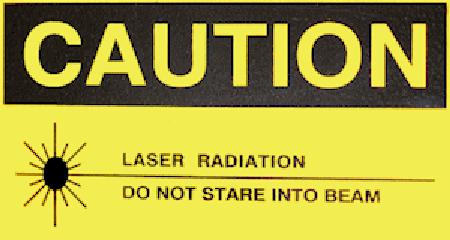06.F.13 Medical surveillance.
See Section 33 for requirements specific to work conducted under the provisions of 29 CFR 1910.120 and 29 CFR 1926.65.
- Medical examinations are not routinely required before occupational exposure to ionizing radiation. For USACE personnel, a medical examination must be conducted in accordance with DA PAM 40-501, when deemed necessary, by a physician, the RSO, or other regulations. The RSO will coordinate with supporting medical personnel to help ensure that personnel receive appropriate occupational health surveillance.
- All cases of overexposure and suspected ingestion or inhalation of radioactive materials must be referred to a physician for examination.
06.F.14 Radon-222.
- If a work area is occupied for 40-hours per week or more by an individual 18 years of age or older, and average natural occurring radon-222 concentration is greater than 100 pCi/L, then number of hours worked in the area by the individual must be reduced or engineering controls introduced to reduce the radon-222 concentration. If the exposure is due to a regulated radiation source, the requirements of the NRC license must apply. > See 29 CFR 1910.1096(c)(1) which references 10 CFR 20 Appendix B Table 1 and Table 2.
- Any work area in a structure, building, or tunnel, wherein workers may be reasonably expected to be exposed to naturally occurring radon-222 exceeding 25 pCi/L averaged over a 40-hour work week, is an Airborne Radioactivity Area and must be posted in accordance with 29 CFR 1910.1096(e)(4)(ii).
- All individuals working in or frequenting any portion of an area posted per Section 06.F.14.b must receive instruction regarding exposure to radiation as per 29 CFR 1910.1096(i).
06.G Non-ionizing Radiation, Magnetic and Electric Fields.
06.G.01 Lasers.
- Only qualified and trained employees may be assigned to install, adjust, and operate laser equipment. Proof of qualification of the laser equipment operator must be in the operator's possession during operation. A qualified employee must design or review for adequacy all radiation safety Standard Operating Procedure (SOP).
- Laser equipment must bear a label to indicate make, maximum output, and beam spread.
- Areas in which lasers are used must be posted with standard laser warning signs. > See Figures 8-5 and 8-6
- Employees whose work requires exposure to laser beams must be provided with appropriate laser safety goggles that will protect for the specific wavelength of the laser and be of optical density adequate for the energy involved, as specified in Table 6-2. Protective goggles must bear a label identifying the following data: the laser wavelengths for which use is intended, the optical density of those wavelengths, and the visible light transmission.
- Beam shutters or caps must be used, or the laser turned off, when laser transmission is not required. When the laser is left unattended for a period of time (e.g., during lunch hour, overnight, or at change of shifts) the laser must be turned off.
| Intensity, continuous wave maximum power density (watts/cm 2) | Attenuation | |
|---|---|---|
| Optical density | Attenuation factor | |
| 0.01 | 5 | 10,000 |
| 0.1 | 6 | 100,000 |
| 1.0 | 7 | 1,000,000 |
| 10.0 | 8 | 10,000,000 |
- Only mechanical or electronic means must be used as a detector for guiding the internal alignment of the laser.
- The laser beam must not be directed at employees: whenever possible, laser units in operation must be set above the heads of employees.
- When it is raining or snowing or when there is dust or fog in the air, the operation of laser systems must be prohibited (as practical); during such weather conditions employees must be kept out of range of the areas of source and target.
- Employee exposure to laser power densities must be within the TLVs as specified by the ACGIH in "Threshold Limit Values and Biological Exposure Indices."
- Only Class 1, 2, or 3a lasers may be used as hand-held pointing devices. Lasers used as pointing devices (e.g., during briefings) must not be directed toward employees and must be handled and stored in accordance with the manufacturer's recommendations.
- Suspected LASER eye injuries: Immediately evacuate personnel suspected of experiencing potentially damaging eye exposure from LASER radiation to the nearest medical facility for an eye examination. LASER eye injuries require immediate specialized ophthalmologic care to minimize long-term visual acuity loss. Medical personnel should obtain medical guidance for LASER injuries from the Tri-Service LASER Incident Hotline, (800) 473-3549 (24-hour phone line).
Knowledge Check Choose the best answer for the question.
6-13. The laser beam must not be directed at employees and whenever possible, laser units in operation must _____.
You forgot to answer the question!

